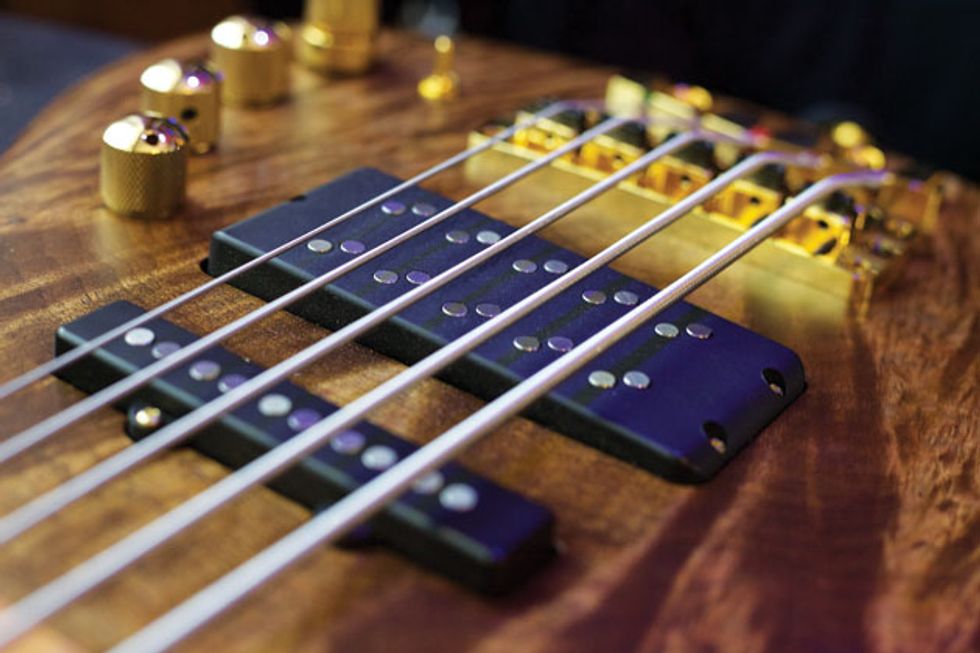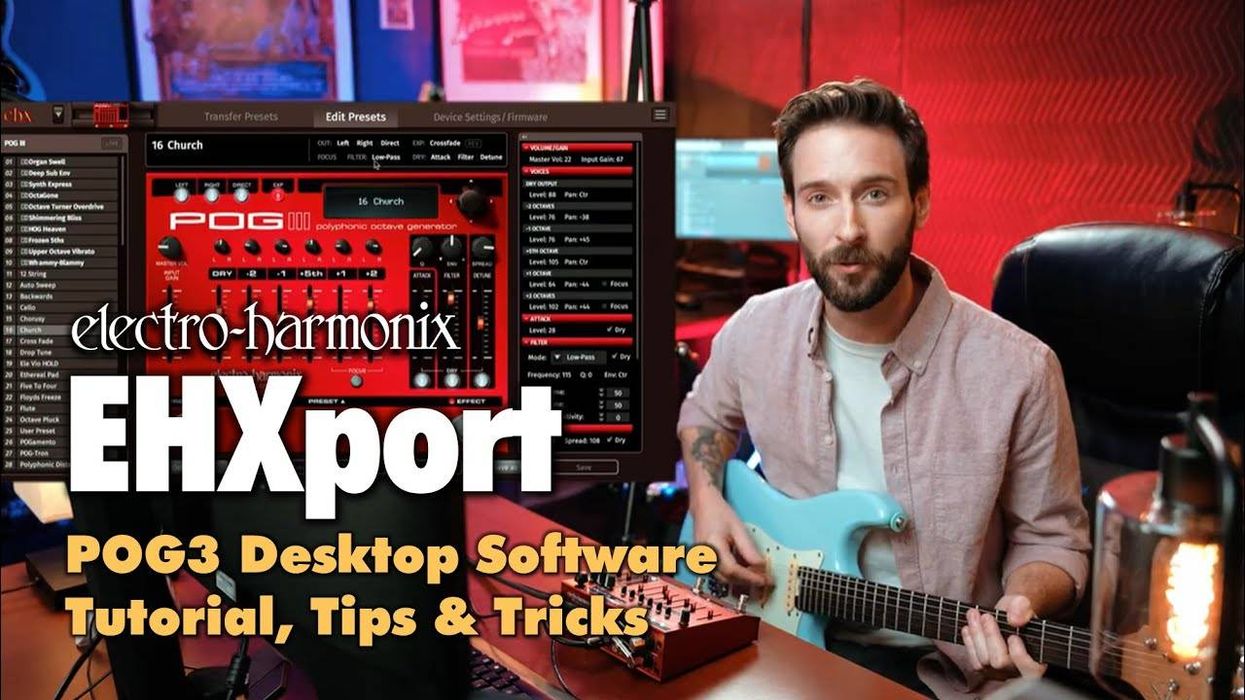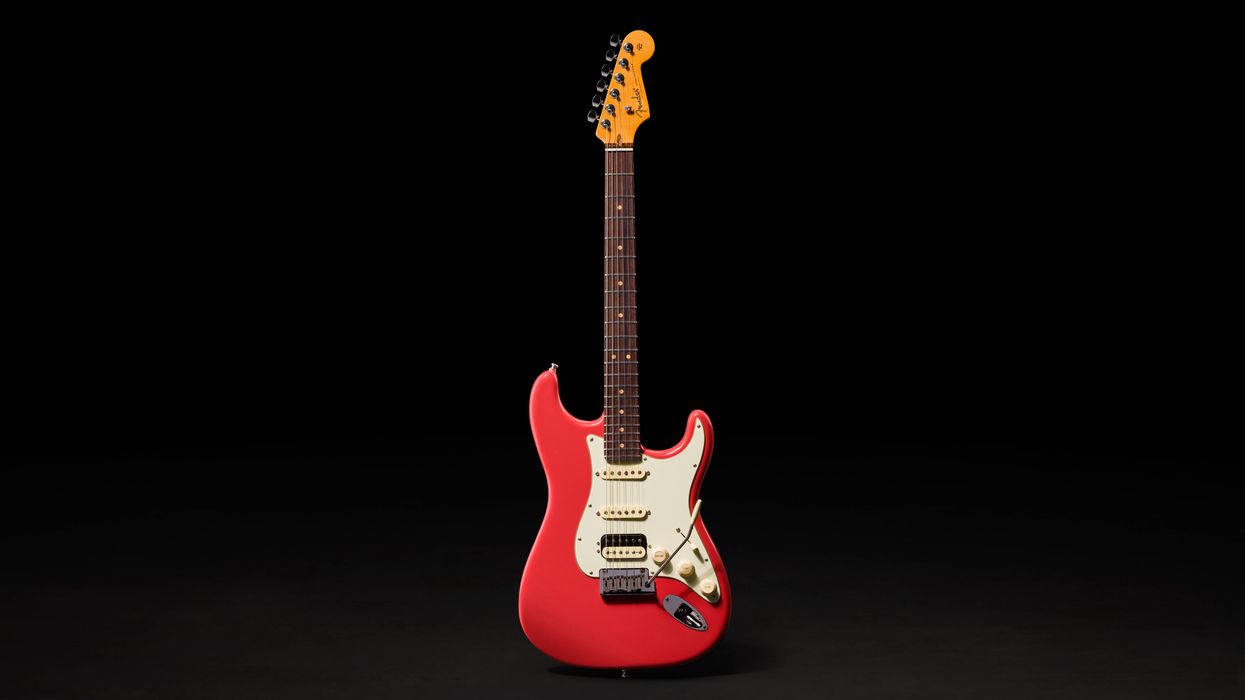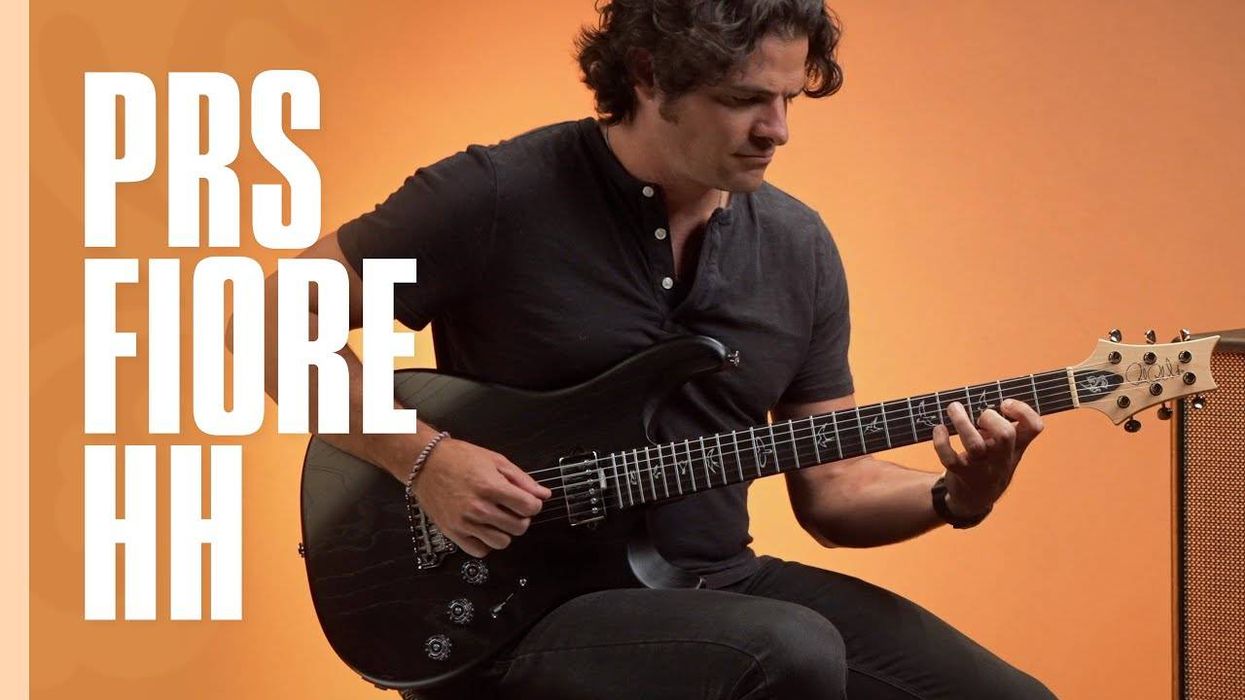When I look back on my career in this business, there is a trend of me staying with a project for about two years before I start looking for a different touring project to keep myself inspired and fresh on my main gig. Maybe I’m a restless soul, a vagabond, or even non-committal to a certain degree. All I know is that I am always looking for any way possible to make playing bass new and interesting at all times—even if it includes non-traditional changes in my equipment. This month, I’d like to share two of my “bassist life hacks” that I’ve found to be very helpful over the past few years.
Bringing stage to studio. In addition to incorporating non-Fender-style instruments into my regular rotation [“Get Over Your Tone,” October 2016], the most major thing I have changed lately is the way I record bass. I’ve enjoyed many years of working in studios and playing on albums I really love between tours, but I have never enjoyed recording as much as playing live. I’ve just never felt like I was able to get the tone and the feel in the studio that I can achieve while playing live.
When I moved to Nashville many years ago, I was told to get an Avalon U5 direct box, and I did. Many studio house engineers love them and it’s what I’ve mainly used for recording sessions. In spite of its large headroom and clear tone, however, I never felt truly inspired recording with it. I also try not to use too many pedals when recording unless I need an obvious effect to the tone, like distortion. So what could I do to bump up my game?
On tour this past year, I’ve been using a small, relatively inexpensive class-D amplifier. And I use the DI (Photo 1) in the back of the amp post-EQ instead of pre-EQ, in spite of FOH engineers generally preferring pre-EQ for the most control over the sound. I’ve been using the EQ sparingly, but enough to where I don’t feel like I am playing through a DI only. As a result of this live experience, I’ve also been using this small amp’s DI in the studio instead of the high-end units my colleagues are using. I’ll tell the engineers and fellow musicians to avoid judgment until they hear it, and the result is often overwhelmingly positive comments like, “I am not doing anything to your signal.”
There is a reason why certain units are classics, and I fully realize that records have been made using said units for decades, but music is art and individual expression. So, if bypassing the use of products with a reputation of admittedly proven excellence is what it takes for me to be truly excited about playing sessions, then that is what I am going to do.
Breaking rules for tone’s sake. In a column about three years ago [“Dont Get Mad, Get Even,” September 2013], I talked about the importance of note-to-note evenness when deciding on what bass to purchase. The issue of the lower strings overpowering the thinner strings often gets more pronounced on extended-range instruments, so it’s a concern since I primarily play 5-string basses. And while I consider the basses I own to be fairly even, I’ve started to break the rules of many world-class guitar techs regarding pickup height.
Photo 2 — Rather than relying too heavily on compression to correct imbalances, the steep angle of this bridge pickup helps ensure that the volume and attack stays even between the heavier-mass strings and the thinner strings.
What I do is position a pickup as close as humanly possible to the 1st string without the string actually hitting it (Photo 2). On the opposite end, I make sure the part of the pickup that rests under the 4th and 5th strings is positioned significantly lower than the part of the pickup under the thinner strings.
I do this by ear and by feel, notby measurement. I won’t even look at an input meter until I first listen carefully to each string and determine that I hear the same volume and feel almost the same amount of rumble through an amplifier. Not a single bass I’ve purchased in a store or received from a custom builder has arrived with the pickups adjusted to actual string mass. Even some of the greatest setup guys here in Nashville—and I think we have the best ones in the world—don’t really adjust for volume imbalance completely to my liking.
In conclusion, I’m not saying that I am right and the people who are legitimately more skilled than me in their respective fields (in this case, engineers and luthiers) are wrong. What I am saying is that to hear what I want to hear and to feel inspired, I’m going to do whatever is needed with my equipment.







![Rig Rundown: AFI [2025]](https://www.premierguitar.com/media-library/youtube.jpg?id=62064741&width=1245&height=700&quality=70&coordinates=0%2C0%2C0%2C0)












 Shop Scott's Rig
Shop Scott's Rig


![Devon Eisenbarger [Katy Perry] Rig Rundown](https://www.premierguitar.com/media-library/youtube.jpg?id=61774583&width=1245&height=700&quality=70&coordinates=0%2C0%2C0%2C0)












































